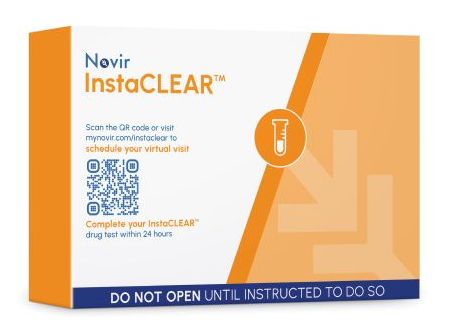Concerned you may not be compliant?
Contact UsDOT auditors are responsible for making sure employer are in compliance with the federal regulations for DOT drug and alcohol testing.
We’ve compiled a DOT audit checklist that represent most of the records a DOT Agency and USCG auditor, inspector, or investigator will usually request and review during a program review.
Keep in mind that DOT Agency and USCG regulations may have additional and more specific record review requirements.
DOT Audit/Inspection/Investigation/Compliance Records Review Checklist
Policies, Plans, and Reports
- Alcohol and drug testing policies and instructions for implementing your program
- Previous two MIS annual reports either submitted to DOT, or prepared and retained
- Copies of written consent forms you sent to obtain 40.25 drug and alcohol information from previous
employers, and the responses received from those employers - Copies of written consent forms you received from prospective employers for 40.25 information, and
documentation of your responses - Semi-annual statistical summary reports from laboratories
- List of all employees hired or transferred into safety-sensitive service for the past two years, including
documentation of previous employer records check - List of all employees with a non-negative test result in the last five years
- Proof that you have received a “Driver Not Prohibited” result for pre-employment FMCSA Clearinghouse queries for FMCSA employees hired since January 6, 2020
- Proof that you have conducted annual limited queries for all existing FMCSA employees at least once every 12 months.
Employee and Supervisor Training Records
- Educational materials for employees
- Documentation showing how education materials were made available to employees
- List of supervisors responsible for making reasonable suspicion and reasonable cause determinations
- Supervisor training documentation
- Under FRA, supervisor post- accident training lesson plans, course materials, and attendance lists
Random Testing Records
- Information about the type of method used to select employees for testing
- Names of all employees in the random testing pool for each selection period that the DOT Agency or
USCG will review - Names of all employees selected for testing
- Names of all employees actually tested
- CCFs and ATFs showing employees were tested within the selection period
- For each selected employee not tested, documentation showing why the collection did not occur
- Records of collections by location, by date (or day of the week), and by time of the day (or shift)
- Proof that testing occurred throughout all shifts and all workdays, in other words – testing was
unpredictable - For railroads, your approved Drug and Alcohol Random Testing Plan
Drug Testing Custody and Control Forms for all DOT Tests
- Pre-employment
- Random
- Reasonable suspicion, including supervisor justification documentation
- Reasonable cause, under FAA, FRA, and PHMSA, including supervisor justification documentation
- Post-accident, including documentation showing criteria were met
- Return-to-duty
- Follow-up
Testing Forms for all DOT Tests
- Pre-employment, if applicable
- Random, under FMCSA, FAA, FRA, and FTA
- Reasonable suspicion, including supervisor justification documentation
- Reasonable cause under FRA, including supervisor justification documentation
- Post-accident, including documentation showing criteria were met
- Return-to-duty
- Follow-up
- Correctable and non-correctable flaw documentation
Employee Return to Duty Records
- SAP Initial Evaluation reports
- SAP Follow-up Evaluation reports, including follow-up testing plans
- Employee ―Return to Duty and ―Second Chance Agreements, when applicable
- Return-to-duty and Follow-up testing compliance documentation
- Lists of qualified SAPs that you give to those who violate the regulations
Service Agent Documentation
- Lists of service agents and their contact information
- Written agreements and contracts with service agents, if applicable
- Credentials, training, and examination or proficiency documentation


